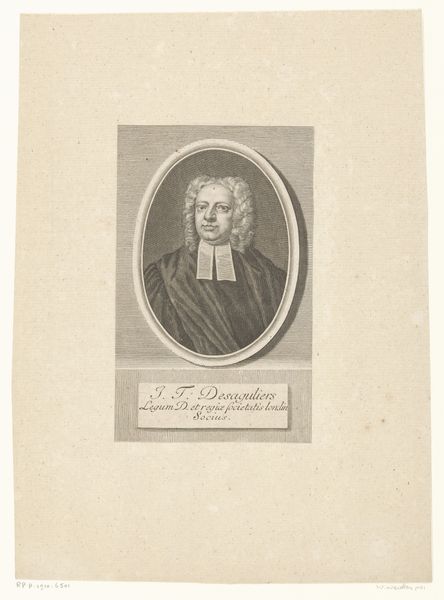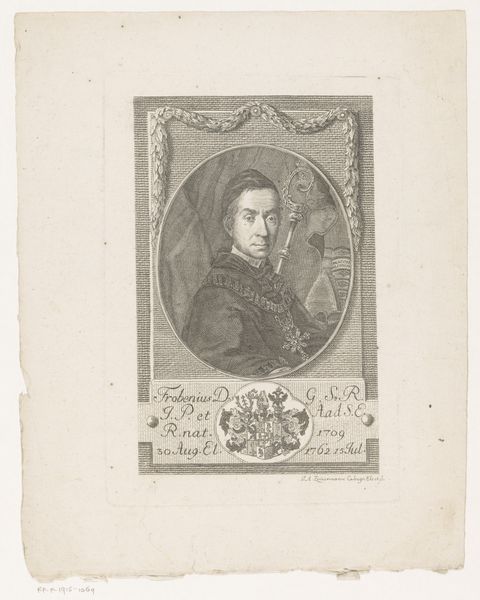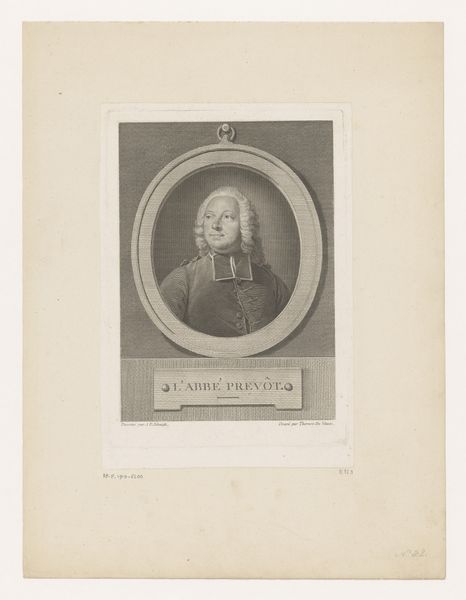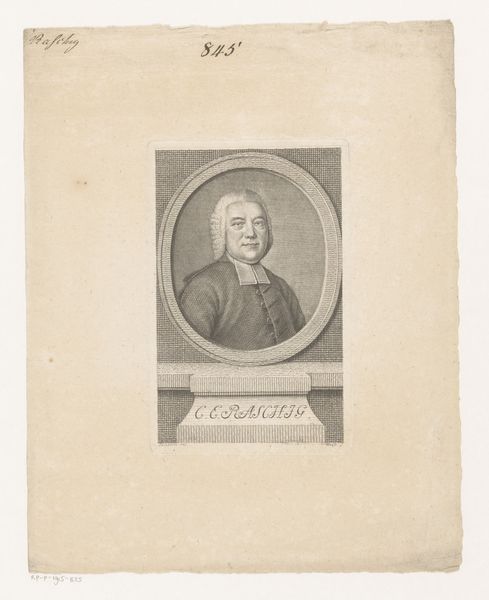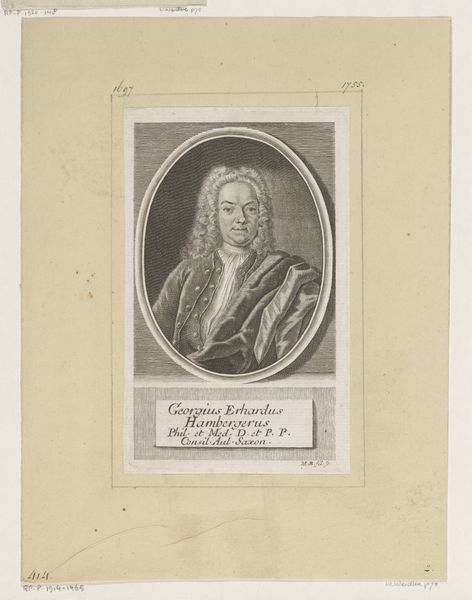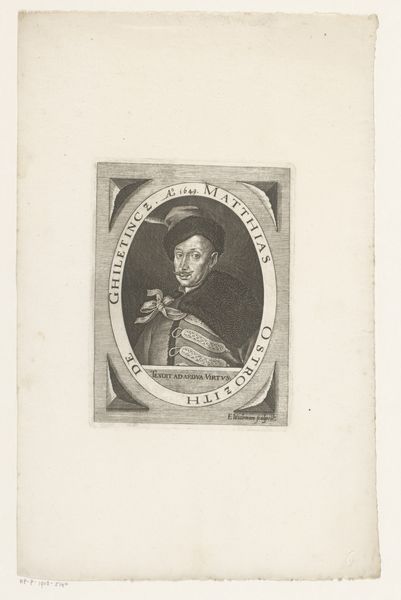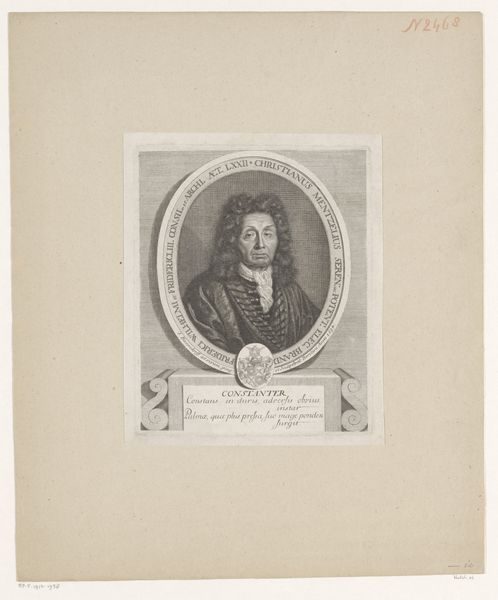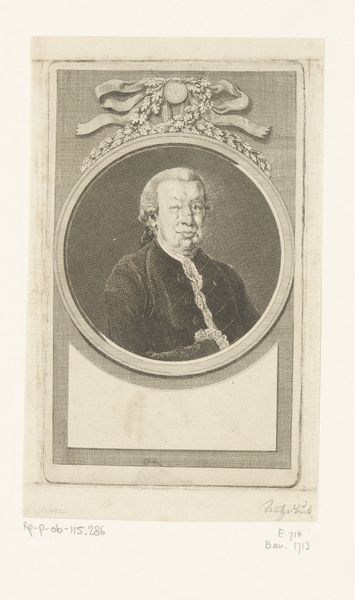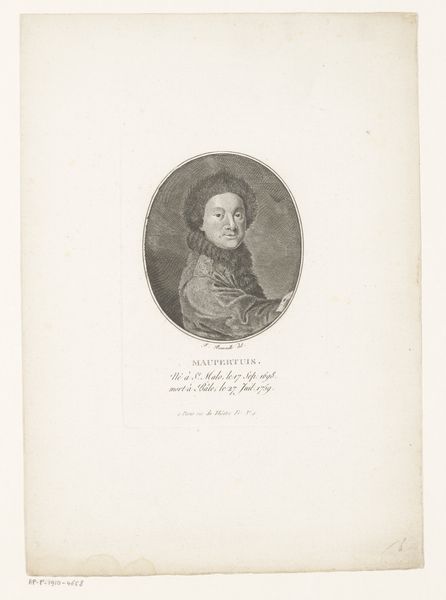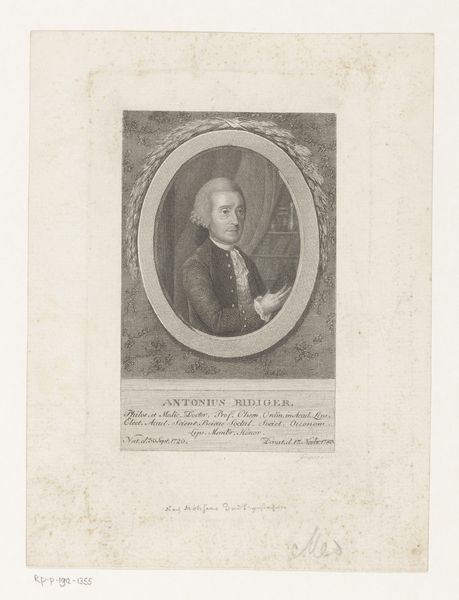
print, engraving
#
portrait
#
baroque
# print
#
form
#
line
#
academic-art
#
engraving
Dimensions: height 136 mm, width 92 mm
Copyright: Rijks Museum: Open Domain
This portrait of Johann Permeier was made by Sebastian Furck in the 17th century using engraving. This painstaking method involves incising an image onto a metal plate, inking the surface, and then using a press to transfer the image to paper. Engraving demands precision and control. Look closely, and you will notice how Furck skillfully manipulates line weight and density to model form and texture. See how the fine lines create subtle gradations of tone, bringing Permeier's face to life, capturing the texture of his clothing, and the details of his collar. Consider the social context of this print. Engravings like these were often commissioned as portraits of notable figures, or used to disseminate information. They speak to the rise of print culture and its impact on communication and representation. The labor involved in producing this print would have required specialized training and skilled craftsmanship. This contrasts with our contemporary means of image production, which are often automated and readily accessible. By appreciating the materials, processes, and social context of this engraving, we can move beyond the traditional distinctions between art and craft and gain a richer understanding of its cultural significance.
Comments
No comments
Be the first to comment and join the conversation on the ultimate creative platform.


